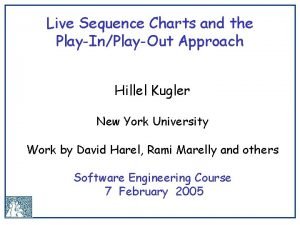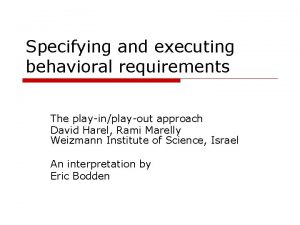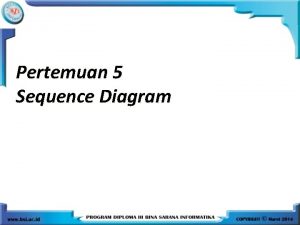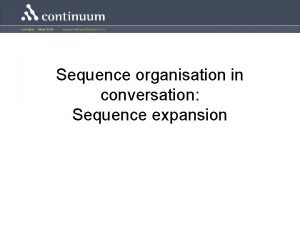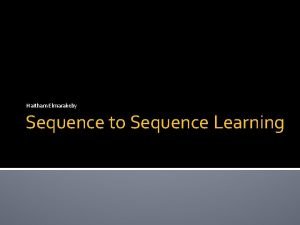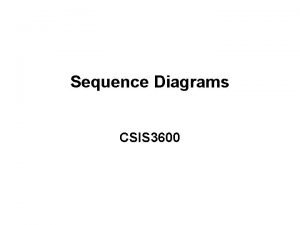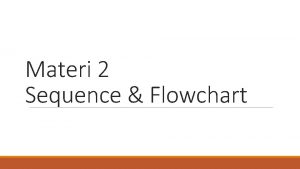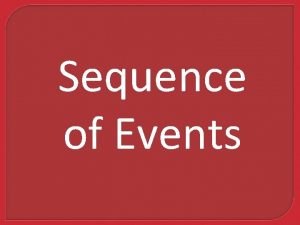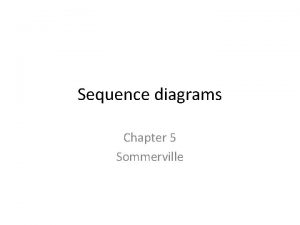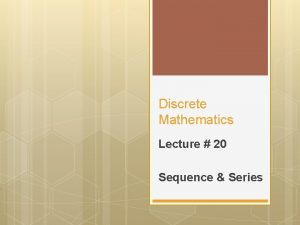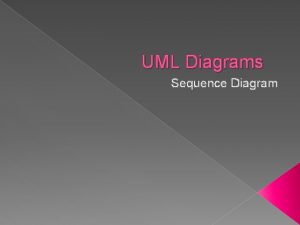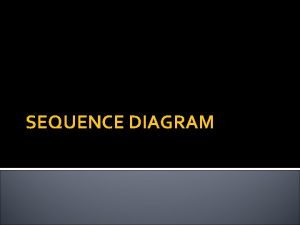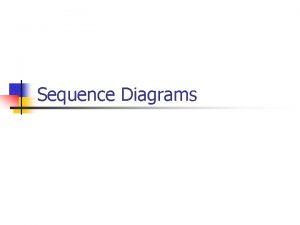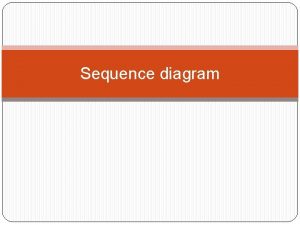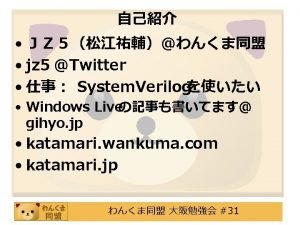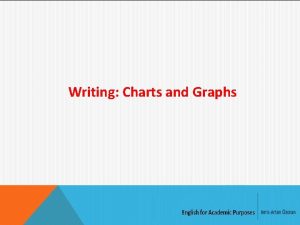Live Sequence Charts and the PlayInPlayOut Approach Hillel

























- Slides: 25

Live Sequence Charts and the Play-In/Play-Out Approach Hillel Kugler New York University Work by David Harel, Rami Marelly and others Software Engineering Course 7 February 2005

Main visual formalism used for requirements: message sequence charts (MSCs) Keyboard Send Key Click(digit) Click Sent Retrieve(digit) number Call(number) signal not busy

Requirements; Scenario-based Stories about the system MSCs: (Message Sequence Charts) inter-object behavior (one story for all relevant objects)

But, … we need richer requirements may/must; can/always; fragmental and overlapping scenarios; anti-scenarios; etc. We must go far beyond MSCs Consistency gets very difficult

Live sequence charts (LSC’s) ife into Message Sequence Charts” (Damm & Harel, ‘ 98 ) A natural extension of classical MSCs, with modalities (universal/existential, hot/cold, etc. ) and structure (subcharts, conditionals, loops, etc. )

mandatory chart universal A all system runs satisfy chart provisional existential at least one run satisfies chart E element

Basic form of an LSC prechart (if) main chart (then)

• Subcharts • Loops • Cold conditions enable control structures • Hot conditions enable anti-scenarios: the forbidden scenario False

Play-In/ Play-Out (Harel & Marelly) code generation use-cases system model played-in scenarios (smart) play-in testing & verification play-out behavior requirements methodologies & (LSCs ) structure synthesis code model-code associativity

The Play-Engine: Play-In • Use the GUI whenever possible; clicks, right-clicks, menus, etc. • Reflect as much as possible in the GUI itself, including mouse-over displaying and pop-up notes. • Allow direct chart manipulation too, and chart element selection. • Slicker HCI definitely desirable.

The Play-Engine: Play-Out • Universal charts drive the execution • (external event; step*; stable? ) = superstep • Play-Out activates system events • Feeling of working with Final Implementation Play-Engine can thus be viewed as a “Universal Reactive System”.


LSC Language Features • • Messages Assignments Conditions Advanced Features: Symbolic Instances Time Forbidden Elements

Symbolic Instances • Associate instances with classes rather than with objects. • Useful for parameterized systems or when the number of objects may change dynamically (construction and destruction).

Playing with Time

Utilizing cold time elements

Forbidden messages and conditions (scoped)

Applications • Smart Cards Machine (with Gera Weiss) (Ametist project)

Flight Control - Voting and Monitoring IAI – Halman, Haruvi, Lahav, Zenou (OMEGA)

Depannage Service - Telecom France Telecom – Pierre Combes (OMEGA)

Modeling C. elegans (J. Hubbard , N. Kam, J. Fisher, M. Stern, D. Harel and others)

LSCs and the Play/In-Play-Out approach - Requirement Specification - Rapid prototyping - Testing - Verification (Smart Play-Out)

Perhaps no need for model or code at all? basic structure code generation use-cases system model testing & verification played behavior play-in play-out structure code model-code associativity behavior requirementsmethodologies & LSCs or temporal logic synthesis object model diagrams & statecharts

Lots of Related Work (Apologies to work not mentioned) • MSC’s – Alur/Holzmann/Peled/Yannakakis, Henriksen/Mukund/Kumar/Thiagarajan, Systa/Koskimies/Tuomi/Mannisto, Broy, Kruger, Schumann /Whittle … • LSC’s – Damm Klose Wittke … • SCR – Heitmeyer Kirby Labaw Bharadwaj … • Temporal Logic … • Model Checking …

References: http: //www. wisdom. weizmann. ac. il/~harel http: //www. cs. nyu. edu/~kugler A book on the topic: Come, Let’s Play: Scenario-Based Programming Using LSCs and the Play-Engine D. Harel and R. Marelly Springer-Verlag, 2003 (includes the Play-Engine software)
 Live sequence charts
Live sequence charts Sigal hillel
Sigal hillel Quizit live
Quizit live Live healthy be happy
Live healthy be happy Difference between finite and infinite sequence
Difference between finite and infinite sequence Virtual circuit and datagram networks in computer networks
Virtual circuit and datagram networks in computer networks Deep learning approach and surface learning approach
Deep learning approach and surface learning approach Nucleotide to amino acid
Nucleotide to amino acid What is a pseudocode with example?
What is a pseudocode with example? Convolutional sequence to sequence learning
Convolutional sequence to sequence learning Cognitive approach vs behavioral approach
Cognitive approach vs behavioral approach Waterfall approach marketing example
Waterfall approach marketing example Multi approach avoidance conflict
Multi approach avoidance conflict Cognitive approach vs behavioral approach
Cognitive approach vs behavioral approach Definition of research approach
Definition of research approach Diagram for traditional approach
Diagram for traditional approach Hát kết hợp bộ gõ cơ thể
Hát kết hợp bộ gõ cơ thể Lp html
Lp html Bổ thể
Bổ thể Tỉ lệ cơ thể trẻ em
Tỉ lệ cơ thể trẻ em Gấu đi như thế nào
Gấu đi như thế nào Tư thế worm breton
Tư thế worm breton Chúa yêu trần thế alleluia
Chúa yêu trần thế alleluia Các môn thể thao bắt đầu bằng tiếng nhảy
Các môn thể thao bắt đầu bằng tiếng nhảy Thế nào là hệ số cao nhất
Thế nào là hệ số cao nhất Các châu lục và đại dương trên thế giới
Các châu lục và đại dương trên thế giới
